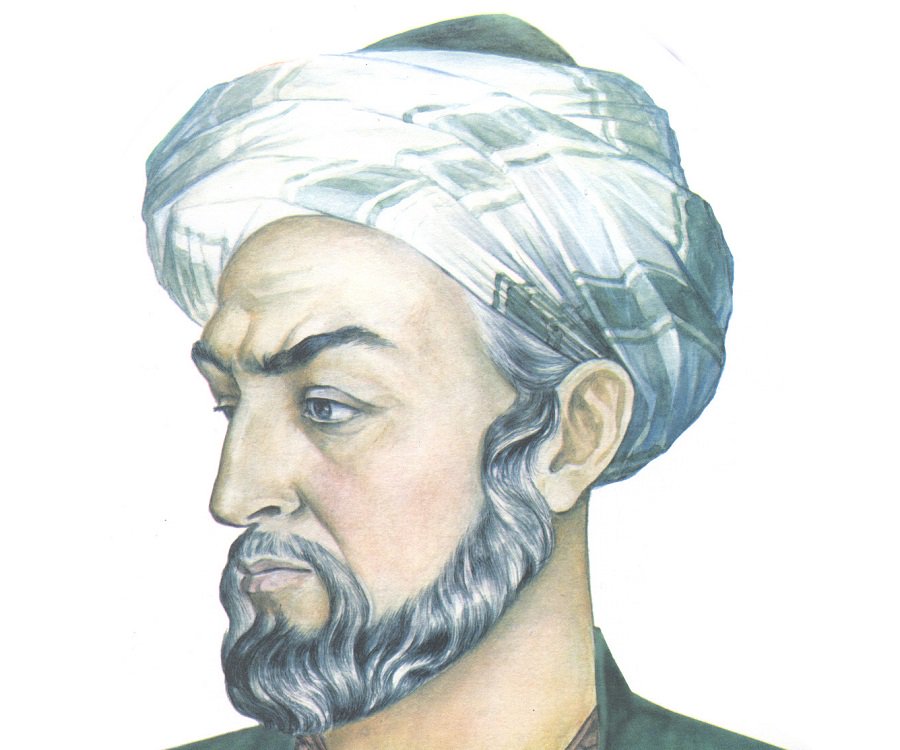Ibn Sina: Light from the East — Группа стратегического видения «Россия
20 May 2019
https://russia-islworld.ru/1ge/
History Ibn Sina Cinema
Have you ever wondered where the term “medicine”, which has become a part of daily life, came from? There is an opinion among scientists and researchers that the emergence of this word is connected with the name of Ibn Sina (he is also called Avicenna), a great Eastern sage, physician, scientist – “madad Sina”.
Unfortunate misunderstanding
If we refer to history of Spain, we will find out that after Eastern Renaissance many Western scientists rewrote, rethought the works of Eastern thinkers. If there had been no Renaissance in the East, there would have been no European one. But despite this, in the rather popular series of “The 100 Prominent Scientists of the World” there is not a single word about the biography and about the great contribution of Muslim scientists into the establishment of the world science.
Perhaps, there is not such a person in the world who has never heard about Avicenna, who does not follow his philosophy and use his discoveries and achievements in everyday life. Ibn Sina (Abu Ali Husein Ibn Abdallah Sina) is one of the people who left a bright mark on human history. He is famous as a doctor, philosopher, mathematician, musician, poet, prominent scientist who made the invaluable contribution in 29 spheres of science.
The exact amount of his works is unknown, but researchers are hesitating between numbers 160 and 450. His books were burned, pulled out, hidden, passed to each other under pain of death, but even their simple enumeration sounds impressive: “The Book of Healing”, “The Book of Salvation”, “Remarks and Admonitions”, “The Book of Knowledge”. Impressive, isn’t it?
That is why it is even more surprising and unclear, why there is not a word about such a prominent scientist of the East in the popular and regularly broadcast cycle of short films “The 100 Prominent Scientists of the World”.
Ibn Sina on the screen
The most important part of the film is the acquaintance of the world-famous scientist-encyclopedist Ibn Sina with the great thinker Abu Rayhan Biruni. The film shooting took place in the territory of several countries – Uzbekistan, Iran, France and Russia and the main role of the oriental thinker were played by young talented actors Hasan and Husan Salikhov.
The film is biographical and educational. The first shots of the film are symbolic – we can see young Ibn Sina who is going upstairs. But then the picture changes and we can see the racket that is ready to take off…
Sacred Bukhara is a citadel of science and theology. The word “Bukhara” itself means the place of knowledge. Not only Bukhara but also some other cities were centres of science, culture and architecture.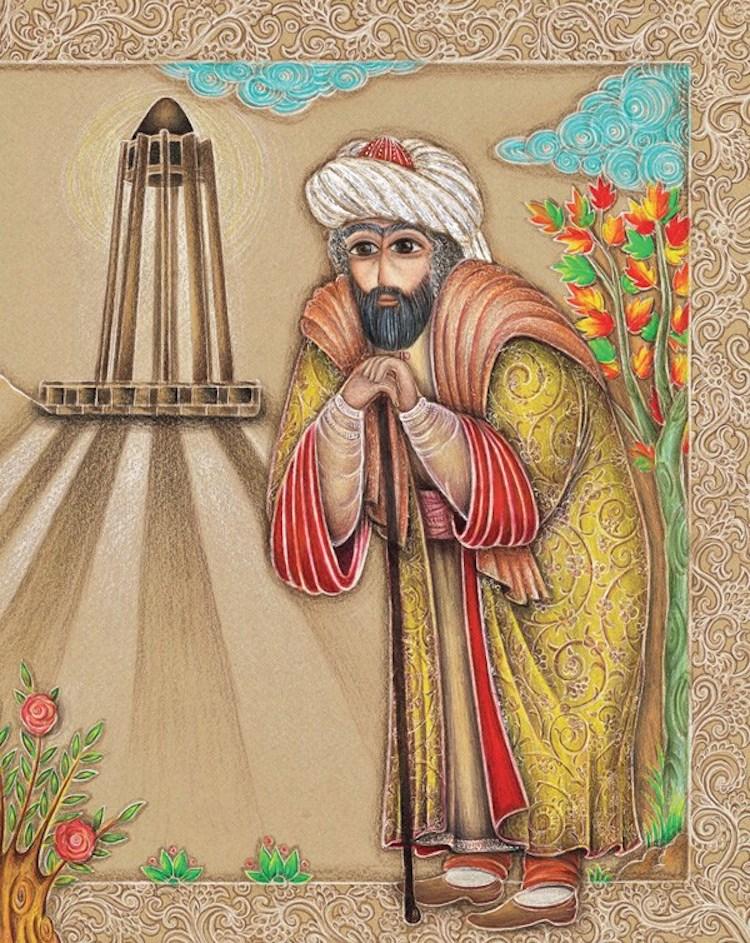 Exactly in the territory of Khwarazm the book “The Avesta” was created. It is a unique spiritual monument of the world culture. Early Middle Ages in Central Asia were the times of upsurge and heyday of the incredibly powerful intellectual civilization, which gave an impetus to the transformation of the world.
Exactly in the territory of Khwarazm the book “The Avesta” was created. It is a unique spiritual monument of the world culture. Early Middle Ages in Central Asia were the times of upsurge and heyday of the incredibly powerful intellectual civilization, which gave an impetus to the transformation of the world.
“Eastern Renaissance” was the name of that unique phenomenon. It was the time of great geniuses. They were the encyclopedist Abu Nasr Al-Farabi – “Aristotle of the East”; the mathematician Muhammad al-Khwarizmi – the founder of algebra; the astronomer and geographer Ahmad Farghani that was one of the first people who proved that the Earth had the form of a ball; respected scientists-theologians Imam Al-Bukhari, Imam Tirmidhi and a number of other famous names…
“They say that the West is a body and the East is a spirit. But there was the human who united the whole world. The most universal head of the epoch was Abu Ali Ibn Sina…”
There is an ancient belief: when a genius is born people hear not the crying but the laughter of a baby and all the birds around sing” – it is how the narration about a difficult but very productive life of one of the greatest scientists of the East who divided the world science, including medicine, into “before” and “after Avicenna” begins.
Ibn Sina was born in 980 in the family of a rich person in the small village near Bukhara, Afshana (it is the territory of Central Asia). At that time it was the capital of the Samanid state. When the family moved to the capital, the boy who was gifted from his infancy, got access to deep knowledge, because at that time Bukhara was the educational centre, where various philosophers, doctors and poets came to in order to visit the richest palace library.
Even in early childhood Avicenna differed from peers in his incredible curiosity. He surprised adults with constant questions, very often showing his teachers a much deeper view of life than they expected from that young man.
As soon as the talented boy was 10, he knew the Quran by heart. People who surrounded Ibn Sina were impressed by the teenager’s success. And then father made up his mind to take his son from school in order to pay more attention to his individual education. A teacher (a visiting old man) began to come to their house to teach him Physics, Astronomy, Philosophy, Geography and other necessary subjects.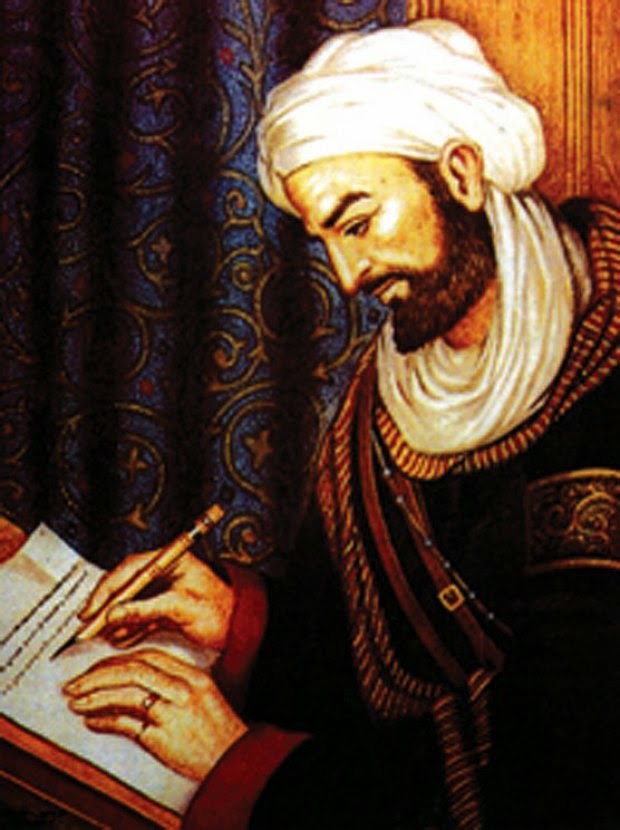
After a while, the pupil reached his teacher’s level of knowledge and he made a decision to start independent study to find answers on the questions he was curious about. When he was 14 the smart beyond his age boy got interested in medicine. He began to study all the treatises that were available in the city and then he even visited the most complicated patients in order to understand the truth of science deeper. A famous doctor and an author of the main medical textbook of those times, Abu Sahl Masihi, caused his interest in medicine.
Once an unusual case took place in the palace: the head of the state got ill but none of the court doctors could not choose the right treatment for him. And then young Avicenna was invited to the emir. He gave proper recommendations and successfully revealed the type of disease. After that Ibn Sina became the personal doctor of the ruler. His new occupation opened to him the access to books of the palace library, for which people came there from around the world.
Already by the age of 18 the literate young man had debated with outstanding scientists of the East and Central Asia by correspondence. And when he was 20 he wrote such books as “The Extensive Encyclopedia”, ethics publications and a medical dictionary.
However, the war began – Bukhara was conquered by the Turkic tribes, who destroyed and burnt the capital almost to the ground. Simultaneously they ruined the rich library. Ibn Sina’s father died and the boy made up his mind to leave the homeland. He did not know that he would never be able to set foot on the native land of Bukhara again. From that moment all his further life would be full of intrigues, envy of the genius of that time and of all the East and constant wanderings around the world.
Intellectual environment of Hamadan
In Khwarazm the young doctor made many friends and soon there came his former mentors Masihi and Biruni. The local ruler of the city promoted the development of different sciences and therefore he allowed gathering in the palace for productive communication.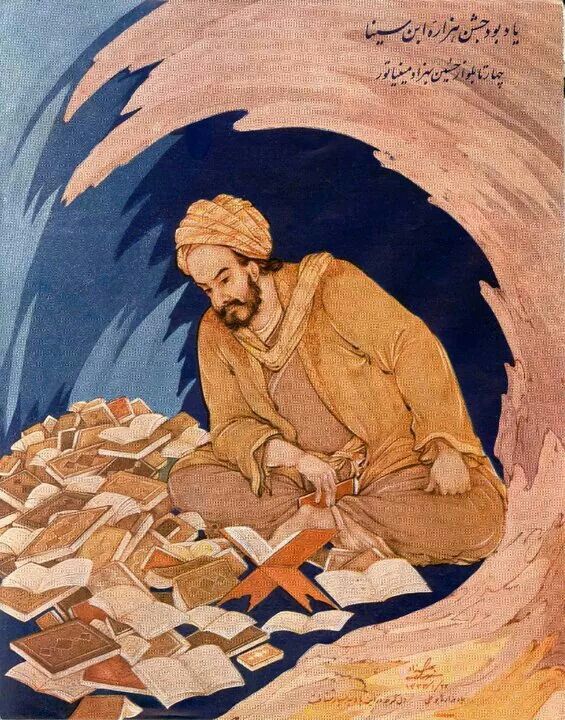
In those years the state prohibited to dissect human bodies for studying their structure. Violators of the law were sentenced to death penalty, but Avicenna and Masihi could not be stopped by that law from thirst for knowledge and their desire to improve the existing level of medicine in order to be able to help people. And some time later the scientists were invited to the sultan.
It was known that such invitations threatened scientists and poets with only one thing – death. Remembering that fact Ibn Sina and his companion decided to escape. Without having calculated the amount of necessary water and food in haste and in addition having got into a hurricane in the desert, Avicenna lost Masihi. The scientist had years of wanderings ahead, his attempts to hide from the formidable sultan, changes of names in attempt to hide his identity in order to survive. But it was not the obstacle for his scientific activity.
In 1016 Ibn Sina stayed in Hamadan (the former capital of Media).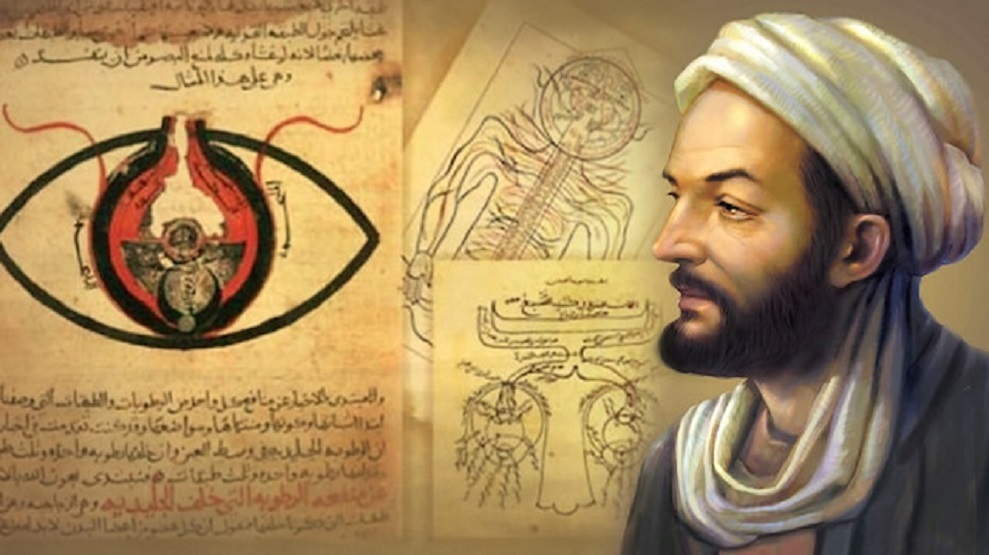 At that time poorly educated emirs ruled there that was the advantage for Avicenna. He quickly received the post of chief physician of the local ruler and he even was given the title of chief minister-vizier.
At that time poorly educated emirs ruled there that was the advantage for Avicenna. He quickly received the post of chief physician of the local ruler and he even was given the title of chief minister-vizier.
The years of living in Hamadan made it possible for the scientist to finish the first volume of his main work – the book “Canon of Medicine”, which has been studied in medical institutions till now. This book impresses its readers by the discoveries made.
In a relatively short period of time “Canon” turned into the encyclopedia of the world importance that was also used in the territory of Ancient Rus. Even if the scientist had not written anything else except “Canon”, he would have provided himself with immortality with the help of that work. There are 5 000 pages in a modern edition, about 2 000 diseases. Detailed kinds of treatment follow after the description of symptoms.
Ibn Sina’s discoveries
He suggested treating not a disease but a patient and told about the third state of the body – between health and illness (that means chronic fatigue).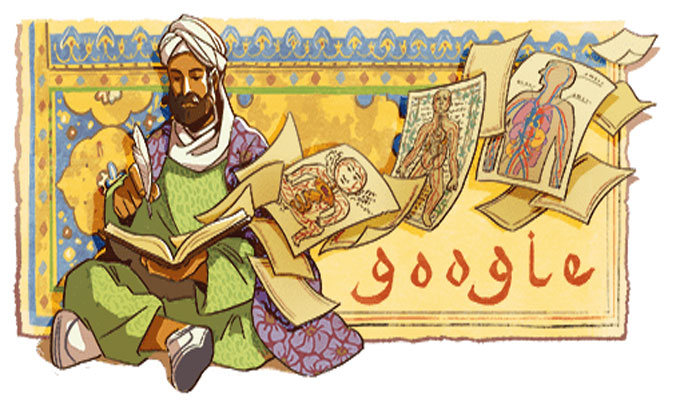
This fundamental work consists of five volumes:
Volume 1 – medical science (the description of acute chronic diseases, their diagnostics, treatment, surgery).
Volume 2 – stories about simple cure of natural origin.
Volume 3 and 4 – recommendations for the treatment of human organ diseases and fractures of the body.
Volume 5 – the description of properties of complex medicine self-prepared by Avicenna as well as with reference to ancient doctors of Europe and Asia.
Up until now in Europe all medics have been taught according to Ibn Sina’s “Canon”. This work has become one of the most studied in the history of the mankind.
During his research and scientific studies Ibn Sina found out that viruses caused infectious diseases.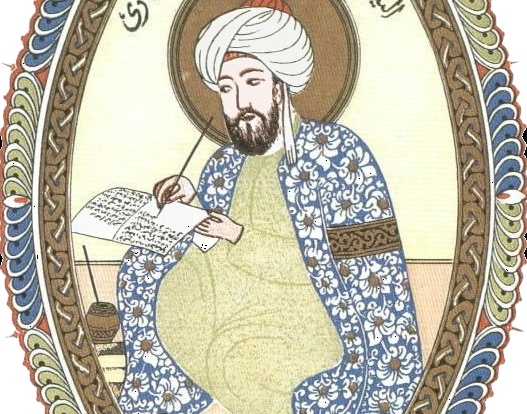 That hypothesis will be confirmed only in 800 years by the Frenchman Louis Pasteur.
That hypothesis will be confirmed only in 800 years by the Frenchman Louis Pasteur.
It is necessary to highlight the philosopher’s knowledge of pulse. He described all the possible types and states of it in the book. Avicenna became one of the first doctors who gave the definition to such complex diseases as plague, jaundice, cholera. It was he who explained the structure of a human eye in details.
Avicenna did not oppose the theory that God was the beginning of all the beginnings and the root cause of all that existed on the Planet. Having established the eternity of the world, he analyzed in details the essence of human’s soul, which appeared in various forms and bodies (like an animal or a human) in the world and then it returned to its Creator again.
Avicenna preferred to speculate about serious topics with the help of poems. In that form he wrote such works as “A Treatise on Love”,”Hayy ibn Yaqdhan”, “The Bird” and many others.
Ibn Sina made an invaluable contribution into Psychology: he developed his own doctrine in matters of human temperament (the division into hot, cold, wet and dry characters). It is necessary to note his works in Mechanics (the theory of the enclosed power), in music (works according to the theory of Vocal Art).
It is necessary to note his works in Mechanics (the theory of the enclosed power), in music (works according to the theory of Vocal Art).
The number of all the works of the philosopher in various resources is different. Some historians claim that he created about 453 books of different scientific directions. In the Arabic literature there is about a dozen works of the philosopher (Astronomy, Chemistry, Alchemy and so on) in the preserved incomplete handwritten form. Today they are located in libraries around the world. As far as his poems are concerned, he glorified women’s beauty, love, harmony, perfection.
Avicenna lived the interesting life full of ups and downs. To his deepest regret, the Muslim scientist did not manage to return to the homeland after long wanderings because he died in a foreign land in 1037. He was under 57. The outstanding scientist was buried in Hamadan and 8 months later after the ceremony his body was moved to Isfahan for burial in the mausoleum.
Feeling the approach of death, Ibn Sina turned his eyes and pleas to God: “Who else will be able to relieve the sufferings? Who else can I beg? My soul will accept forgiveness and will be together with you forever. Streams of tears like pearl thread will flow down on my chest from my eyelashes…”
“We die and take only one thing away with us – the knowledge of the fact that we have learnt nothing…”
Ilmira Gafiyatullina
Фонд исследований исламской культуры — Ibn Sina Foundation
- русский
- فارسی
- English
Искать…
- русский
- فارسی
- English
Искать…
Новости
Конференция «Исламоведение: факт, метод, интерпретация» в Институте философии РАН: февраль 2023
2—3 февраля 2023 г.
2022 Дек 28 Институт философии РАН при поддержке Фонда исследований исламской культуры имени Ибн Сины проводит научную конференцию с международным участием «Исламоведение: факт, метод,…
Институт философии РАН при поддержке Фонда исследований исламской культуры имени Ибн Сины проводит научную конференцию с международным участием «Исламоведение: факт, метод,…Книга «Ибн Халдун в османской историографии» признана лучшей монографией Института философии РАН в 2022 году
Книга И.Р. Насырова «Ибн Халдун в османской историографии» по решению Экспертного совета Института философии РАН получила 1-е место в номинации «Индивидуальная монография» конкурса на лучшую…
2022 Дек 28Фонд Ибн Сины предложил РГБ сотрудничество в области реставрации рукописного наследия
5 декабря руководство Фонда Ибн Сины совместно с директором и сотрудником Центра микрофильмирования «Нур» (Индия) провели переговоры с генеральным директором Российской государственной библиотеки Вадимом Дудой…
2022 Дек 14
Проекты
Следы времен
Персидские сказки
Персидская литература IX–XVIII веков
Назидательная литература эпохи Салджукидов на персидском языке: оригиналы и подделки
Ишрак
Ежегодник исламской философии
Проекты
Издания фонда
Иранская поэзия XX–XXI веков: хрестоматия
Подробнее .
 ..
..Персидский язык и литература в Дагестане
Подробнее …
Ишрак № 10
Подробнее …
В гостях у падишаха
Подробнее …
Главная
Последние исследования
Кто такой Сокрытый Имам?
Дербентские ученые
САВАК против Хомейни.
 Начало
НачалоРамазан – имя Аллаха
САВАК: новый шеф и новые правила
САВАК. Охота на беглеца
Детская клиника в Хьюстоне – Фонд Ибн Сины
Детская клиника в Хьюстоне
В пасмурный день, когда температура держалась в пределах комфортного диапазона, сотни семей, состоящих из разных групп национальностей, посетили Ярмарку детского здоровья Fun and Fit Фонда Ибн Сина в новой современной детской клинике, расположенной по адресу 11220 South.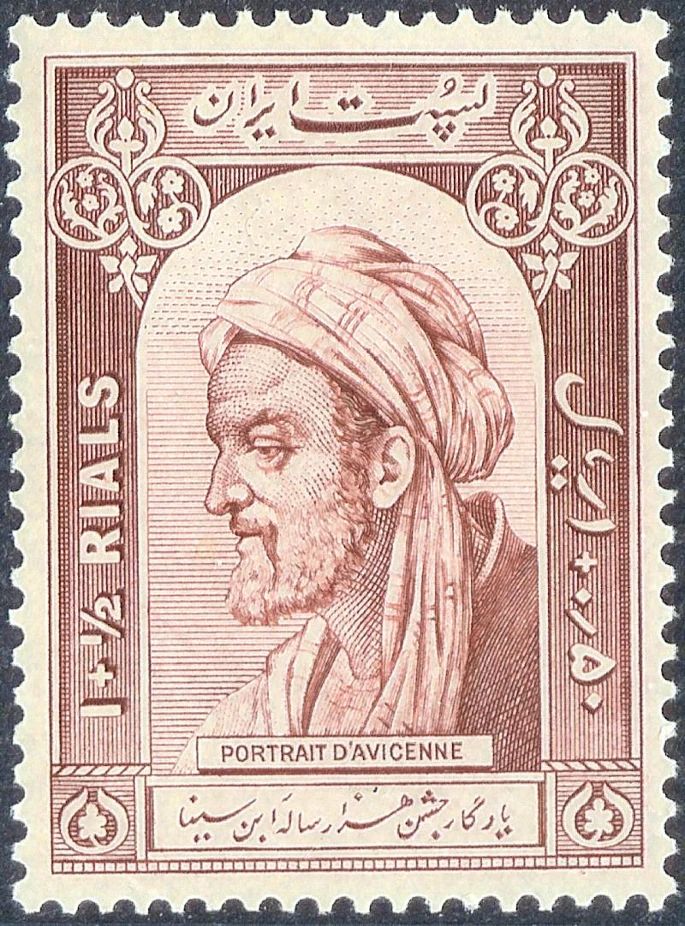 Уилкрест Драйв в Хьюстоне.
Уилкрест Драйв в Хьюстоне.
Члены Совета директоров Фонда Ибн Сины также присутствовали на праздничном мероприятии, где большие транспаранты, флаги, вывески и воздушные шары привлекали внимание автомобилистов, проезжавших по Саут-Уилкрест-драйв и Стэнклиффу.
С 9:00 до 15:00 собралась большая толпа, так как в веселой обстановке детям оказывали бесплатные медицинские услуги.
Дети смеялись и кричали от восторга, когда гладили козлят и других животных в контактном зоопарке, поднимали себе настроение, раскрашивая лица, сражались с воображаемыми противниками с помощью воздушных шаров, скрученных в форме мечей, позировали для радостных селфи с полицейским после гонки чтобы воочию увидеть настоящую полицейскую машину, в восторге от большой красной пожарной машины и пожарных, одетых в полную экипировку, сняли обувь, чтобы преодолеть огромную полосу препятствий / прыгающий дом, вскочили на карусели, ждали терпеливо поглощая попкорн, сладкую вату, печенье, яблоки, бананы и сок, и подпрыгивал в такт развлекательных программ радиостанций и демонстраций зумбы.
Кроме того, многие семьи воспользовались возможностью посетить новую ультрасовременную детскую клинику, которая официально откроется для посетителей в понедельник, 25 апреля.
Семьи выстроились в очередь, чтобы зарегистрироваться для получения многочисленных бесплатных и недорогих услуг новой детской клиники, и посетили стенды поставщиков, созданные множеством организаций, включая Aflac, Texans Together Education Fund, Houston Health and Human Services’ Women’s Infants and Children ( Программа WIC), общественный центр Alief, CHIP, Change Happens, лабораторная диагностика, страхование жизни в Нью-Йорке, защита от кражи личных данных, Enroll America и таблицы регистрации избирателей.
Ibn Sina Foundation — некоммерческая организация, предоставляющая бесплатные и недорогие медицинские и стоматологические услуги незастрахованным и недостаточно застрахованным пациентам в шести клиниках в районе Хьюстона.
Наша новая современная детская клиника принимает программы CHIP, Medicaid и крупные страховые PPO.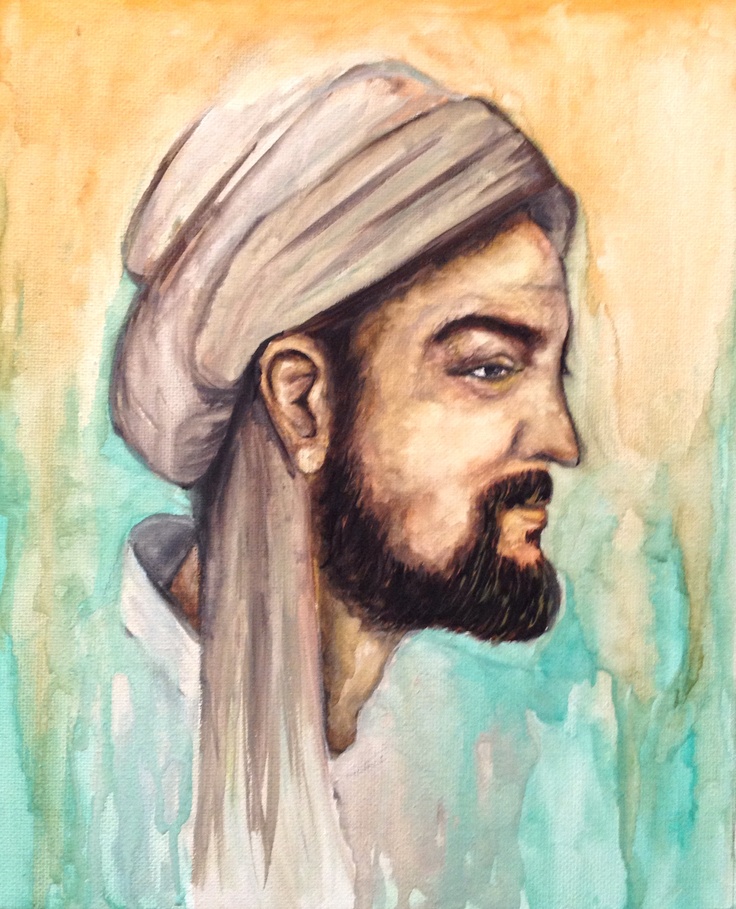 Услуги для детей в возрасте до 21 года включают в себя бесплатные ежегодные посещения, бесплатные посещения больничных, бесплатные спортивные осмотры, бесплатные школьные медицинские осмотры, бесплатные прививки, бесплатные медицинские лаборатории и бесплатные рентгены.
Услуги для детей в возрасте до 21 года включают в себя бесплатные ежегодные посещения, бесплатные посещения больничных, бесплатные спортивные осмотры, бесплатные школьные медицинские осмотры, бесплатные прививки, бесплатные медицинские лаборатории и бесплатные рентгены.
Наша миссия состоит в том, чтобы обеспечить здоровье общества, предоставляя профилактическую и первичную помощь для повышения качества жизни всего сообщества, что включает в себя неустанные усилия многих высококвалифицированных врачей, медсестер, фельдшеров, стоматологов и ассистентов стоматолога, некоторые из которые щедро жертвуют свое время на работу Фонда Ибн Сины.
Цель Фонда Ибн Сины — помочь устранить или значительно уменьшить проблемы со здоровьем в местных сообществах в зоне его обслуживания.
Если пациенты не в состоянии оплатить очень низкую минимальную плату за медицинские услуги, для их обслуживания могут быть приняты специальные меры и исключения. Выстраивая ценные отношения с клиентами, Фонд Ибн Сина усердно работает над тем, чтобы информировать своих пациентов о важности медицинской и стоматологической помощи.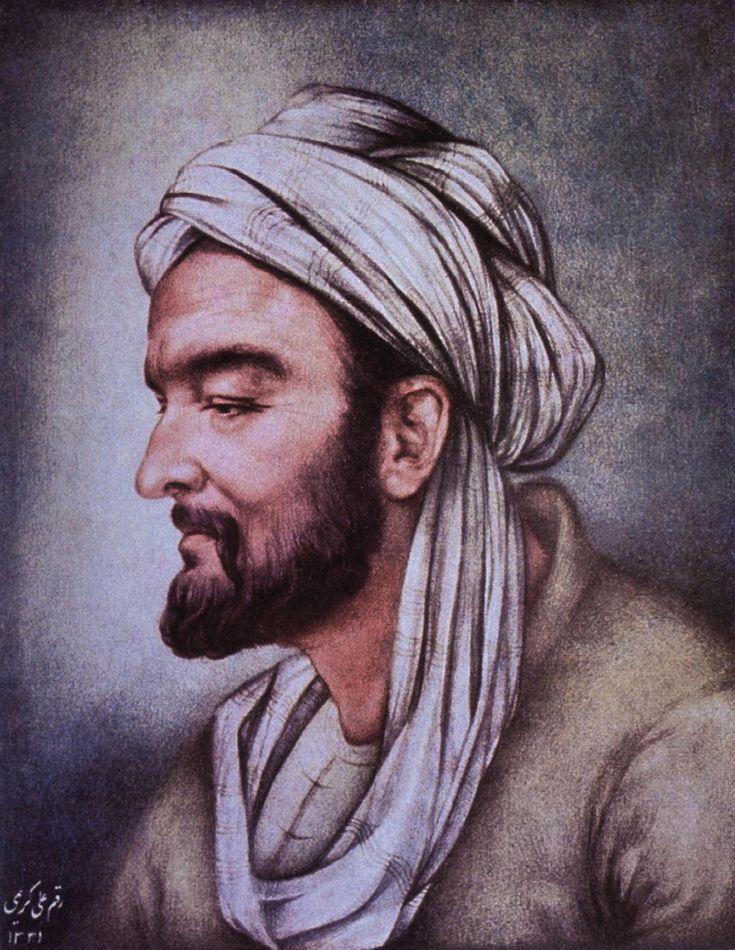 Некоммерческая организация проводит образовательные занятия по различным темам, от респираторных заболеваний до правильного питания и диеты.
Некоммерческая организация проводит образовательные занятия по различным темам, от респираторных заболеваний до правильного питания и диеты.
Андреа Ги-Халат
Координатор по связям с общественностью и маркетингу
Фонд Ибн Сины
[email protected]
281-451-8967 (моб.)
IBN SINA Определение и значение
- Верхние определения
- Викторина
- Примеры
- British
- Scientific
[IB-UHN See-NAH]
/ ˌɪB Я ˈSI Nɑ Nɑ Nɑ Nɑ Nɑ Nɑ NHINAH.
существительное
Арабское имя Авиценны.
ВИКТОРИНА
ВЫ ПРОЙДЕТЕ ЭТИ ГРАММАТИЧЕСКИЕ ВОПРОСЫ ИЛИ НАТЯНУТСЯ?
Плавно переходите к этим распространенным грамматическим ошибкам, которые ставят многих людей в тупик. Удачи!
Вопрос 1 из 7
Заполните пропуск: Я не могу понять, что _____ подарил мне этот подарок.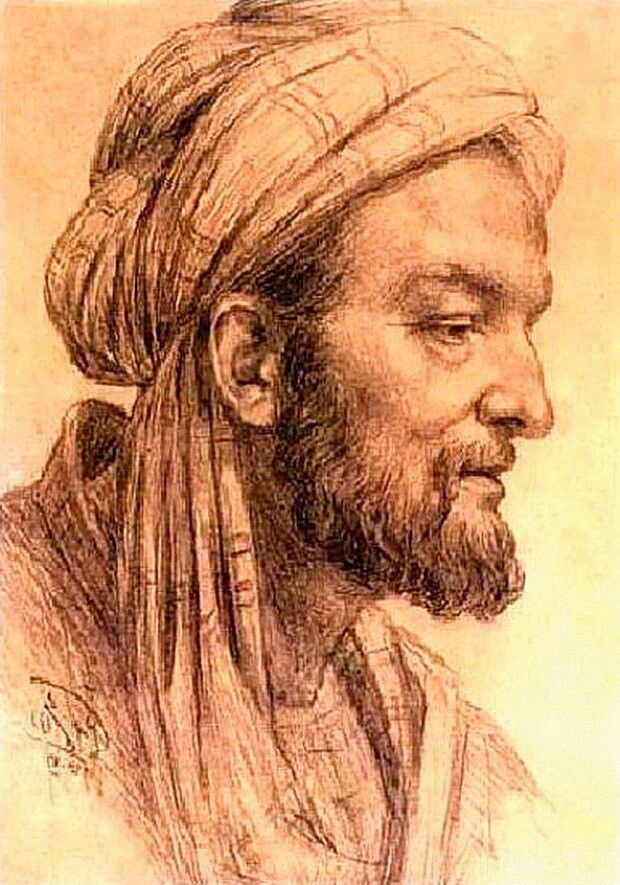
Слова рядом ибн Сина
ибн Габироль, ибн Ханбал, ибн Халдун, ибн Рушд, ибн Сауд, ибн Сина, Ибо, ибогаин, Ибота привет, ИБР, Ибрагим-паша
Dictionary.com Unabridged На основе Random House Unabridged Dictionary, © Random House, Inc. 2023
Как использовать ibn Sina в предложении
Одним из важнейших помещений храма является усыпальница шейха Ади ибн Мусафира.
Отпор верой: внутри иракского храма езидов|Майкл Луонго|21 августа 2014 г.|DAILY BEAST
Теперь из-за восходящих источников, таких как Sina Weibo, этот фундаментальный баланс начал меняться.
Китайский Weibo теряет пользователей|Мэтт Шиавенца|25 января 2014 г.|DAILY BEAST
Среди них был яркий ветеран войны против Советского Союза в Афганистане по имени Ибн аль-Хаттаб.
Влияние братьев Царнаевых на американо-российское сотрудничество в борьбе с терроризмом|Эндрю С. Вайс|21 апреля 2013 г.|DAILY BEAST
После смерти ибн Сауда в 1953 году правопреемство передавалось только его сыновьям.

С назначением принца Мукрина надвигается кризис престолонаследия в Саудовской Аравии|Брюс Ридель|3 февраля 2013 г.|DAILY BEAST
мотоцикл.
Французский подозреваемый в стрельбе Мохамед Мерах в осаде во время рейда|Трейси Макниколл|22 марта 2012|DAILY BEAST
Эта фраза, как говорит Ибн Халликан, впоследствии стала поговоркой.
Босуэлл Багдадский|E. В. Лукас
Таким образом, осторожная энциклопедия; но у Ибн Халликана нет такой нерешительности.
Босуэлл Багдадский|E. В. Лукас
Я немного почерпнул из героики Ибн Халликана, но это хорошо.
Босуэлл из Багдада|E. В. Лукас
Именно в секте Абдуллы ибн Маймуна мы должны искать модель для системы организации Вейсгаупта.
Тайные общества и подрывные движения | Неста Х. Вебстер
Замечания Ибн Батуты (ок. 1332 г.) уже предполагают нынешнее положение вещей, а именно.
Encyclopaedia Britannica, 11th Edition, Volume 11, Slice 8|Various
Британский словарь определений для ibn Sina
ibn-Sina
/ (ˌɪbənˈsiːnə) /
существительное
арабское имя Авиценны
Collins English Dictionary — Complete & Unabridged 2012 Digital Edition
© William Collins Sons & Co.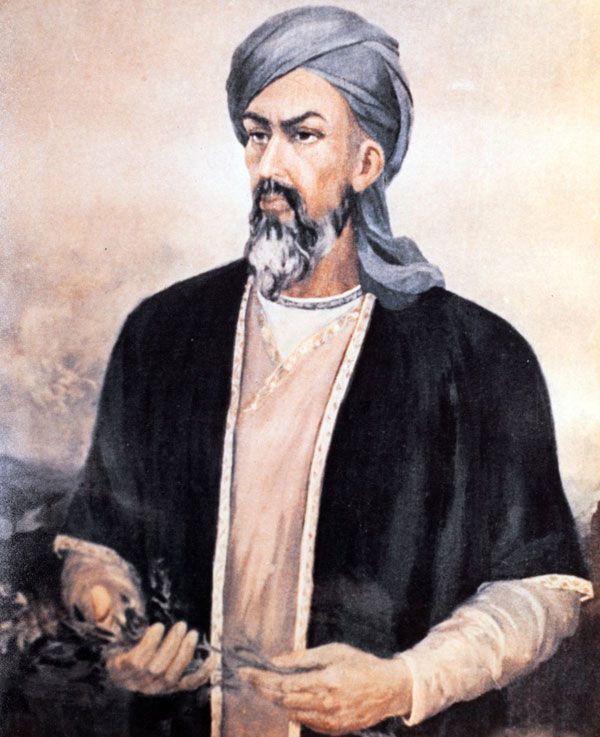

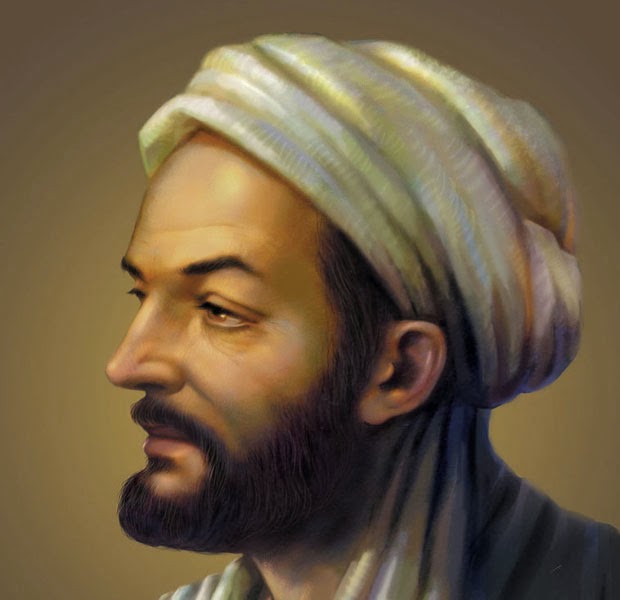 Институт философии РАН при поддержке Фонда исследований исламской культуры имени Ибн Сины проводит научную конференцию с международным участием «Исламоведение: факт, метод,…
Институт философии РАН при поддержке Фонда исследований исламской культуры имени Ибн Сины проводит научную конференцию с международным участием «Исламоведение: факт, метод,… ..
..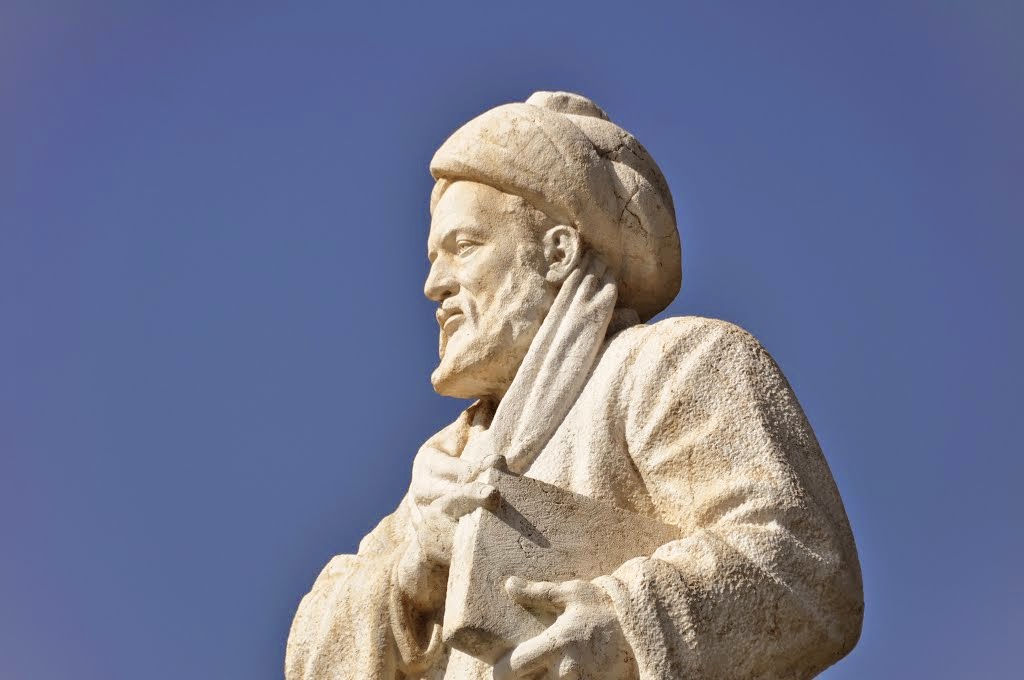 Начало
Начало